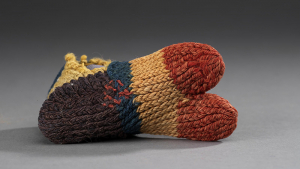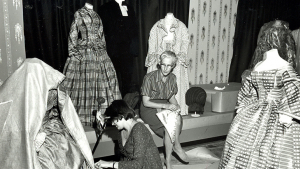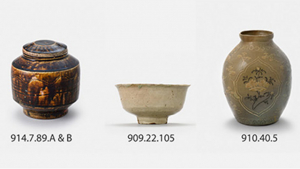Funded by the Social Sciences & Humanities Research Council (SSHRC) Insight Research Grant
Recuperating Fashion History 1700- 2000 sets out to examine and question the existing histories of fashion. It shows the dynamic, economic, social and cultural capital that fashion really held. It does this by tracking the life histories, or biographies, of actual extant fashions in museum collections that show wear and re-wear over years, decades and even centuries.
 A wide variety of typical men, women's and children's fashions are be discussed over the centuries. It looks at the reuse and recuperation of fashion in the 18th century, before the rise of the couturier and branding of fashion. However these clothes were not simply in or out of fashion but were altered, and often completely remade over years and even centuries. This project contextualizes these garments and will locate them within the fashionable wardrobes of the day in the 18th, 19th and 20th centuries.
A wide variety of typical men, women's and children's fashions are be discussed over the centuries. It looks at the reuse and recuperation of fashion in the 18th century, before the rise of the couturier and branding of fashion. However these clothes were not simply in or out of fashion but were altered, and often completely remade over years and even centuries. This project contextualizes these garments and will locate them within the fashionable wardrobes of the day in the 18th, 19th and 20th centuries.
The project examines and contextualizes fashions that have been appropriated, modified and transformed. It will look at the reuse and recuperation of fashion in the 18th century, before the rise of the couturier and branding of fashion. It will embrace the anonymous and clever dressmaker and the elite couturiers such as Charles Frederic Worth and Paul Poiret who frequently used older garments in their own designs. It will focus on the adaptive reuse of the 19th century paisley shawl into the late 20th century and the continual interest and salvaging of Chinese embroideries from shawls and imperial robes and explain why these were so desired, plentiful and appropriate for making new fashions out of old.
These garments are examined in themed case studies as exemplars of overlooked but typical fashions of each period and bring to light the complexity of this marginalized and ‘imperfect’ fashion history. Studied will be
1. Transformed 18th century dress in the 18th, 19th and 20th centuries.
2. Transformed 19th century fashion in the 19th - 20th centuries.
3. Transformed world dress for western fashionable dress in the 18th - 20th centuries.
The project draws on a range of theories, methodologies and kaleidoscopic perspectives in order to contextualize the objects under discussion as fashion history is by its very nature interdisciplinary. It offers historical models for the slow use of fashion that is such a concern today in the global marketplace of fast fashion, and hopefully open up new thinking on how to address the problem of renewing seasonal styles in a moderated manner that fulfills fashions mandate for novelty and change.




